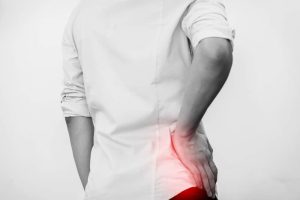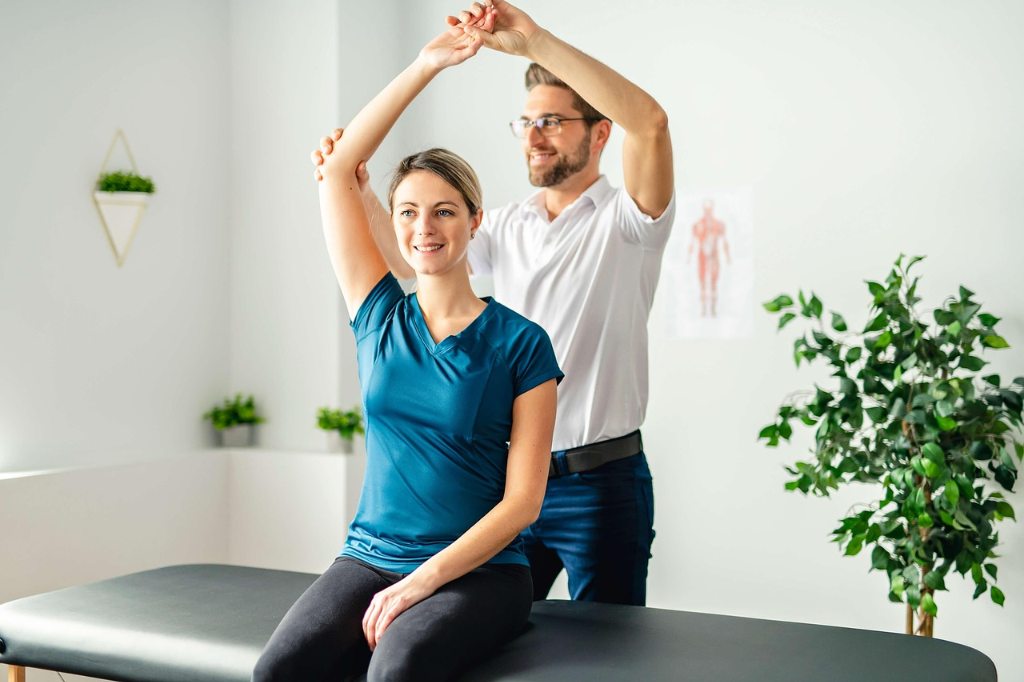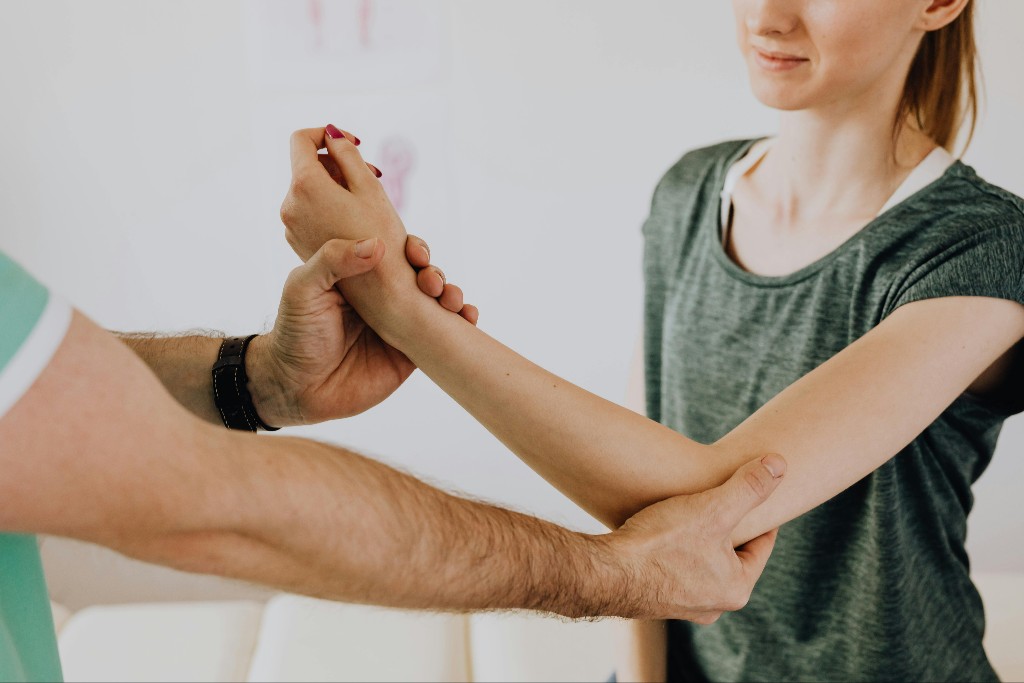
Your Depend on Your Hip Flexors for Everyday Movement
Every time you lift your knee when taking a step, you engage your hip flexors. When you bend at the waist to pick up an object off the floor, you engage your hip flexors. Whether you are walking around your house or going for a run, you depend on your hip flexors for so many movements and activities. However, you might not realize just how much you rely on this strong combination of muscles until you experience some kind of muscle strain or injury. A hip flexor strain can make everyday movements painful, and you might start limiting certain activities to avoid the pain. Hip flexors can become overused, overstretched, or even forced to hyperextend, which leads to pain and reduced mobility. Knowing more about what a hip flexor strain is and what causes it can help you avoid further injury and get back to a healthy, pain-free lifestyle.
Hip Flexor Strains Affects More Than Just Athletes
The hip flexors include the iliacus and psoas major muscles and part of the quadriceps known as the rectus femoris. A strain is a type of injury that affects muscles and tendons where these tissues become overstretched or torn. A mild hip flexor strain may involve overstretched muscles, while a more severe strain would involve partial or complete tears to one or more of these muscles. While you might associate hip flexor strains with hip injuries that affect athletes, the truth is that a hip flexor strain can happen to anyone. Yes, athletes who engage their hip flexors regularly in their sport can run a greater risk of developing a hip flexor strain or injury. Activities and sports like running, dancing, and martial arts frequently engage the hips and can put a lot of pressure on the hip flexors. Other sports and activities where people are more likely to experience a hip flexor strain include cyclists, soccer players, and athletes who jump or perform high knee kicks.
Even if you aren’t an athlete, you can still experience hip pain and other symptoms of a hip flexor strain. People who sit for long hours at a time or live a more sedentary lifestyle can also strain their hip flexors. When you frequently sit at a computer for a long period of time, your hip flexors can start to weaken and tighten. That’s because sitting does not activate this combination of muscles, unlike when you stand and engage your hip flexors. The lack of activity can leave these muscles weak and more susceptible to issues or injuries. Tight hip flexors can also make everyday movements more uncomfortable. Tight, weakened muscles in your hips can shorten over time, which can even lead to an imbalance and result in chronic pain. Sitting with poor posture can also cause problems in your back, leading to lower back pain and hip pain that can become very uncomfortable.
Hip Flexor Strains Can Limit Your Mobility
Pain from a hip flexor strain can make you want to avoid certain movements and activities. The pain from a hip flexor strain typically occurs along the front of your hip and may come on suddenly. You may also notice an increase in pain when you try to lift your knees toward your chest or when stretching your hip muscles. Hip flexor strain can also lead to involuntary muscle spasms in your hips and thighs, making your hips and lower back feel tender and painful to the touch. In some cases, a hip flexor strain may lead to bruising and swelling around the hip and thigh area. Swelling from a hip flexor strain can also aggravate certain movements and make you limit certain motions and activities.
A mild type of hip flexor strain may cause pain while walking and running, which is known as a grade I tear. After sitting for long periods of time, your hips may feel stiff, and moving from the seated position to standing may feel uncomfortable or even painful. A moderate type of hip flexor strain, known as a grade II tear, may make certain movements that engage the hip flexors painful. Overuse of the hip flexors, like while running for a long period, could cause discomfort when you try to sit down after being on your feet. A grade III tear, the more severe type of hip flexor strain, can even cause you to limp. In most cases, a grade III tear will involve a torn muscle, and you may not be able to move around without a limp.
Home Remedies May Help Minor Hip Flexor Strain
For minor hip flexor pain, you may be able to rely on home remedies to help soothe the pain. Resting is the most important way you can help a hip flexor strain heal. Avoid certain activities that aggravate your pain or make it worse. Athletes who experience a hip flexor strain may change their training activities from something high impact, like bicycling, to lower impact, like swimming. Even if you are not a professional athlete, resting your affected muscles is key to getting you back up and on your feet without pain. Take a break from activities like going for a jog around your neighborhood or cycling on your home exercise bike while your overstretched hip flexors have a chance to heal.
You may be able to avoid using prescription pain medications or invasive treatments with a mild hip flexor strain. Apply cold compresses like an ice pack to your hips for 10 to 15 minutes at a time. Cold temperatures help reduce swelling and inflammation in the area while also providing a temporary numbing sensation that dulls the pain and discomfort. You can also alternate with a heating pad 72 hours after you notice the initial pain or hip injury. Applying heat to a hip flexor strain can help loosen tight muscles in the area. Heat patches, a warm washcloth, a hot shower, or a warm bath can also help soothe aching muscles. Talk to your doctor if you experience pain that lasts longer than a week.
Physical Therapy Can Help with Hip Flexor Strains

Supine Stretch
For the supine stretch, you will lie on your back with your legs out straight and feet flexed with your toes pointing toward the ceiling. With one leg staying straight, you will slowly bend your other leg and bring the knee to your hands. Lace your fingers behind the back of your knee and gently pull your knee toward your chest. Hold this pose for 30 seconds, and you will feel a stretch along your glutes and the back of your leg. Then release the knee, straighten the leg out, and repeat on the other side.
Seated Stretch
The seated stretch will require a bench or chair with an open space underneath. Be sure to sit up straight with your feet on the floor and knees bent close to a 90-degree angle. Then, you will leave one foot firmly planted while sliding the other foot backward. As you move your foot backward, lower your knee toward the floor so that your knee is in a straight line below your hip. Engage your gluteus muscles before slowly bringing your knee back up and your foot to the floor. Then repeat on the other side.
Kneeling Stretch
For the kneeling stretch, first kneel down on both knees. Then extend one leg forward so that your foot is planted in front of you and your knee is bent at a 90-degree angle. Place your hands on the knee in front of you while keeping your back straight. Then lean forward into the hip and knee in front of you while engaging your gluteus muscles. Hold this position before returning to the kneeling position and switch to the other side.
Standing Stretch
The standing stretch for hip flexors requires you to stand with your feet hip-width apart and your toes pointed straight ahead. Slowly transfer your weight to one leg while bending the other knee and bringing your heel up toward your buttocks. You will grab that foot with the hand on the same side and gently pull your foot toward your back so that your knee points toward the floor. You may want to stand in front of a counter or chair so you can use the other hand for balance while you do this stretch. Hold this pose for 30 seconds before gently releasing your foot back to the floor and switching to the other side.
Active Stretch
As you move through physical therapy, your stretches and exercises will become more active and advanced. One example of an active stretch is moving from a plank position to a yoga move called pigeon pose. Lie on your stomach with your hands underneath your shoulders and press up into a plank position. While one leg stays outstretched behind you, bring the other knee forward toward the same hand and your foot toward the opposite hand. Then press your hips toward the floor and bring your upper body forward onto your elbows or lying on the floor. Return to a plank position before swapping to the other leg.
If you have hip pain that keeps you from participating in the activities you enjoy, then talk to one of our doctors at AICA Orthopedics. Our team of doctors includes orthopedic surgeons, physical therapists, and chiropractors who create individualized treatment plans and work together so you get the best care possible. We diagnose and treat a wide range of injuries and issues, including hip flexor strains. At AICA Orthopedics, we have all the diagnostic tools we need, including X-rays and CT scans, so you get the most accurate diagnosis for your pain and injuries. Our treatment plans are designed with you in mind, which means we will target your specific symptoms and take all your medical history and goals for recovery into account. We will be there with you from diagnosis through treatment and recovery from a hip flexor strain. Learn how to keep your hips mobile and strong to prevent further injuries or issues with your hip flexors when you visit an AICA Orthopedics clinic near you.





